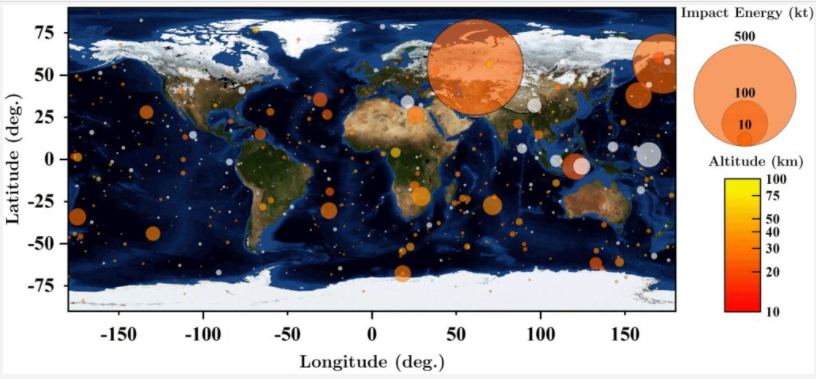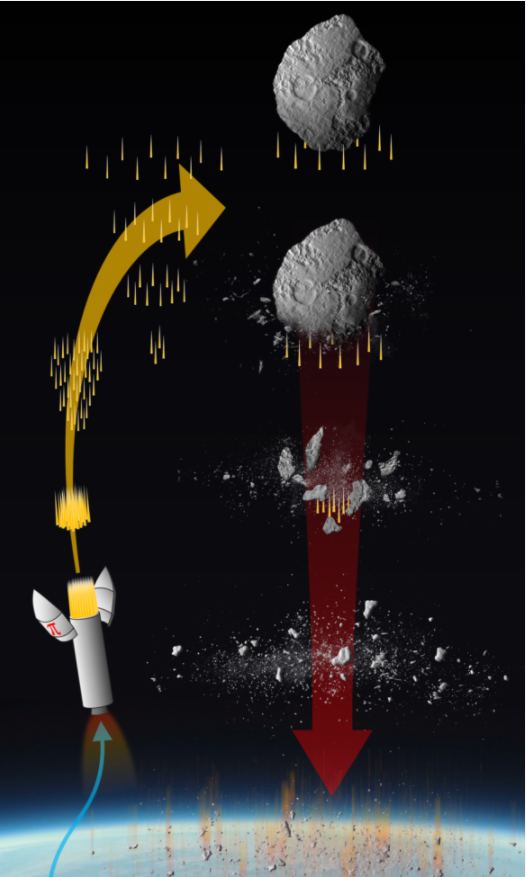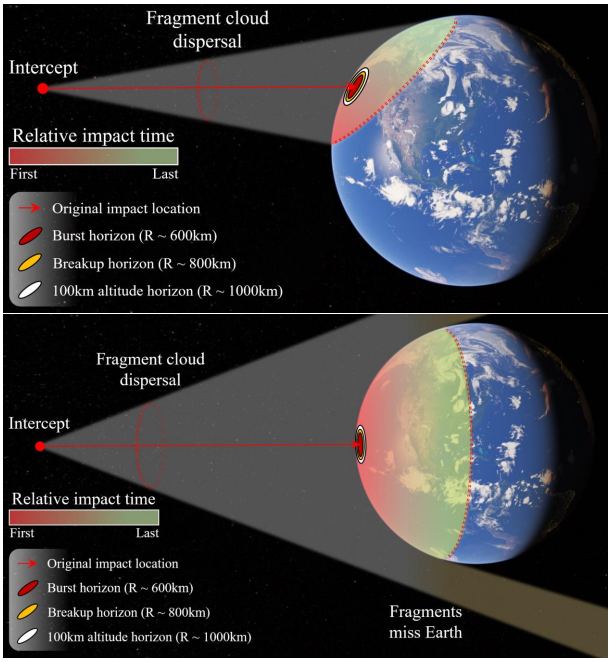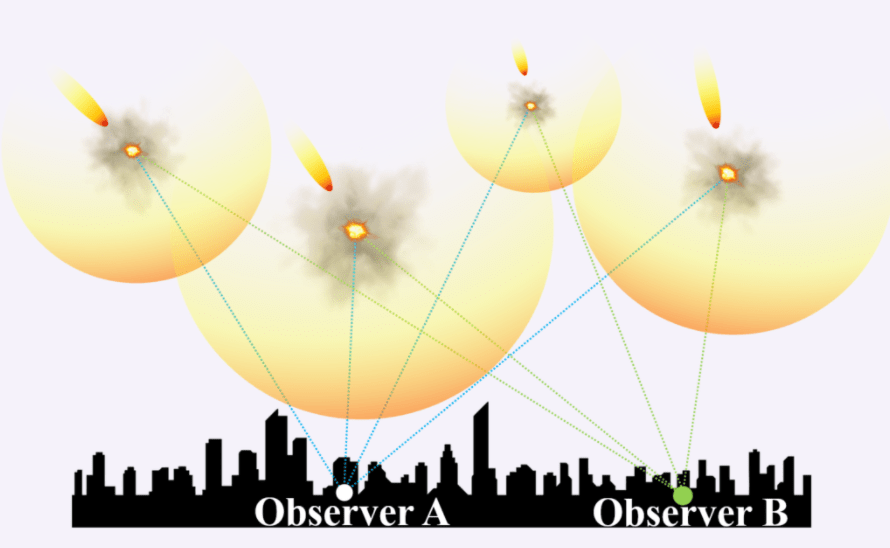Imagine a scenario where we detect an asteroid heading straight for Earth. Imagine that it will arrive in a couple of days, or worse, only a few hours. What could be done to stop it?
It might be possible to protect ourselves and the planet on such short notice. But we'd have to test and build the right infrastructure to do it.
When it comes to asteroids, humanity is engaged in a process of discovery. We send spacecraft out to visit them, and sometimes those spacecraft return samples to Earth. NASA's Lucy mission just launched, and its mission is to visit a total of eight asteroids—one in the main asteroid belt, and seven Jupiter trojans. We're also busy cataloguing all the asteroids we can. We want to know which ones pose a threat to Earth.
But while we do this important work, how are we preparing for an asteroid heading right for us? There's lots of talk and lots of research into this. There's even a bi-annual conference organized around dangerous asteroids called the Planetary Defence Conference. The most recent one was in April of 2021, and it's the seventh one that's been held.
At each of these Planetary Defence conferences, a mock asteroid threat is generated, then over the course of the five-day conference, more detailed mock observations of the asteroid are revealed as fictional months pass. Teams of attendees follow the developments and come up with mitigation strategies. At the 2021 conference, the final mock radar observations revealed that the incoming asteroid was 105 meters across and would strike an area bordering Germany, the Czech Republic, and Austria. What mitigation strategies did the attendees come up with?
Troublingly, not much. There was nothing that could be done to mitigate the impact, and instead, the focus was turned towards civil defence and evacuations. Is this status quo good enough? A 105-meter asteroid won't wipe out civilization, but it'll still cause a lot of damage. A 105-meter asteroid can strike Earth with up to 30 Mt (megatons of TNT), the energy of a modern, large thermonuclear weapon.
In a paper titled " PI: Terminal Planetary Defense," Philip Lubin outlines what's needed to protect Earth from asteroids without much lead time. Lubin is a physics professor at UC Santa Barbara and is the sole author of the paper. The PI in the title stands for "Pulverize It." It's available on the pre-press site arxiv.org.
"So far humanity has been spared large scale catastrophe as was visited upon our previous tenants but counting upon being “lucky” is a poor strategy in the longer term."Philip Lubin
We know there are some asteroids with scheduled close encounters with Earth. Apophis was a concern in December 2004 when it looked like it had a 2.9% chance of striking Earth on Friday, April 13th, 2029. It's about 370 metres (1,210 feet) in diameter and could do an enormous amount of damage. Asteroid Bennu, which is 490 meters 1608 ft) in diameter, will also make a close pass with Earth in 2036.
We know that they won't hit Earth. At least not this time around.
But the problem is that an asteroid that comes so close to Earth can pass through what are called " gravitational keyholes." These are regions where Earth's gravity can nudge an asteroid and send it on a direct collision course with Earth.
"If it goes through the gravitational keyhole, it will generally hit Earth on the next round," Lubin said in a press release.
We can prepare for this, according to Lubin. Because at some point, an asteroid will take us by surprise.
In an emergency asteroid situation, Lubin says, we can still rely on Earth's atmosphere for some protection. The issue is busting an approaching asteroid into small enough pieces that they'll burn up in the atmosphere without causing a massive shockwave or triggering a "nuclear winter" scenario.
To do that, Lubin proposes intercepting an incoming asteroid with a device that strikes the asteroid with an array of penetrating rods. Some of the rods would be filled with explosives. The goal is to pulverize the bolide into small fragments that are 15 meters (approx. 45 ft) in diameter or smaller. Those fragments would form a cloud of debris. Some of the fragments will strike Earth, but hopefully, many will not. That depends on the time of detection, the size of the impactor, and the angles and velocities.
The fragments that strike Earth's atmosphere will be travelling at hypersonic speeds; around Mach 60 according to Lubin. At that speed, the fragments would be heated by extreme friction and would begin to break apart high in the atmosphere, at around 30 km to 50 km (18 to 31 miles) in altitude.
Each of the fragments is still carrying a lot of energy. Each one is similar to a modern thermonuclear weapon, according to Lubin. But rather than a single air burst or impact, the shower of fragments would be similar to multiple thunder and lightning events.
There would be a lot of noise, but not all at once. There would be flashes, but not one big flash. And there would be blast waves, but instead of one massive blast and destructive shock wave, there would be many smaller ones that didn't overlap. Finally, there would be dust. But even the amount of dust is not likely to be dangerous.
In his work Lubin draws our attention to the asteroid Apophis. On Friday, April 13th, 2029, Apophis will pass very close to Earth. It'll come closer to Earth's surface than geosynchronous satellites do, about 31,000 km (19,300 mi). At 370 meters in diameter, it'll carry energy roughly equivalent to humanity's entire nuclear arsenal. The threat is real.
Most asteroid strike prevention talk centers on advance warning. With enough warning, months or even years, a kinetic projectile of a relatively small mass can be sent to intercept an oncoming asteroid. If the asteroid is far enough away from Earth when the projectile strikes it, then a little nudge is all that's needed.
But the PI approach has been simulated with very little lead time. "The PI program is remarkable in the extremely short response times needed for mitigation," Lubin writes. Lubin and his colleagues have done thousands of simulations for a range of different sized asteroids and the results are promising.
Lubin urges a proactive stance on asteroids, especially on "repeat offenders" like Apophis and Bennu. He argues that we need both a formal decision-making process around asteroid threats, as well as a technological implementation of the PI approach. And it has to be international.
"We could eliminate threats such as Apophis and Bennu with PI by intercepting them on a close approach and eliminating them as a future threat. This is both a policy and a technical area to be discussed," Lubin writes.
"Ideally, the area of planetary defence would transcend national borders as the threat respects no borders. An ideal scenario would be to bring together an international effort to defend our planet for future generations."
Apophis is coming, and Lubin thinks it might be a good, though controversial, opportunity to test the PI method.
Is it time? What are we waiting for?
"While we often say that nothing in life is certain but death and taxes, we can certainly also add human extinction to this list," Lubin said. "There is a large asteroid or comet lurking in our solar system with 'Earth' written on it. We just do not know where it is or when it will hit."
More:
- Press Release: Is Planetary Defense PI in the Sky?
- Research Paper: PI: Terminal Planetary Defence
- UCSB Experimental Cosmology Group Blog: PI-Terminal Planetary Defense
 Universe Today
Universe Today




